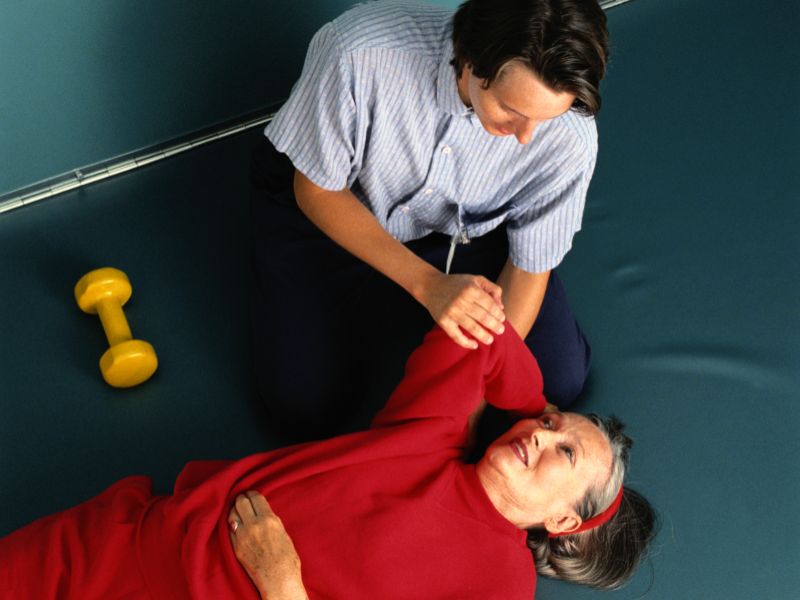Heart Attack Rehab at Home Could Save Lives

MONDAY, May 13, 2019 (HealthDay News) -- If you had a heart attack and could get rehab therapy at home, would you be more likely to get the follow-up care that doctors recommend?
A new scientific statement says you would, and advocates for the option to be more widely available because so many patients never get the therapy -- often because health insurance companies don't cover at-home therapy.
Cardiac rehabilitation is typically provided in a medical center and includes exercise training, nutrition advice and mental health counseling to help patients recover from heart attack, heart failure, angioplasty and bypass surgery.
It can reduce the risk of future heart attacks and improve quality of life.
However, about 80% of U.S. patients who would benefit from cardiac rehabilitation do not receive it, according to Dr. Randal Thomas, chair of the writing group for the statement from American Heart Association (AHA), American College of Cardiology (ACC) and the American Association of Cardiovascular and Pulmonary Rehabilitation.
"There are significant barriers that prevent patients from getting the cardiac rehabilitation care that they need. And there aren't enough programs in the United States to meet the needs of every patient that would benefit," said Thomas, medical director of the cardiac rehabilitation program at the Mayo Clinic in Rochester, Minn.
"There is an urgent need to find new ways of delivering cardiac rehabilitation programs to patients. Home-based care is an excellent option for some patients who aren't able to attend a center-based program," Thomas said in an AHA news release.
The statement also offers guidance for medically supervised home-based cardiac rehabilitation.
"A home-based cardiac rehabilitation program is much more than advising a patient to exercise at home," Thomas said.
"For patients whose heart disease is stable, home-based cardiac rehabilitation is administered and monitored in the same way and by the same health care team as with medical center-based cardiac rehabilitation. The difference is that supervision and coaching are done remotely, using smartphones or other technology," Thomas explained.
An effective home-based program ensures that patients are taking the right medications, are improving exercise and nutrition habits, and that steps are being taken to address their mental health, medical conditions linked to heart disease -- such as diabetes, high blood pressure and high cholesterol -- and risk factors for heart disease such as smoking.
Patients also need to monitored for any heart disease symptoms or for side effects of medications.
"All of these components should be in place with a high-quality home-based program -- if they are not, patients could be receiving less care than they need," Thomas noted.
Heart patients should talk with their health care providers about their rehabilitation options, which could be center-based, home-based or a combination of the two.
"Unfortunately, cardiac rehabilitation in the home-based setting is generally not covered by most insurance carriers, including Medicare. As more evidence accumulates to support home-based cardiac rehabilitation and the technology advances to make this more feasible, we need to work together with policymakers to find ways for these services to be covered," Thomas said.
The statement was published in the AHA journal Circulation, the Journal of the American College of Cardiology and the Journal of Cardiopulmonary Rehabilitation and Prevention.
More information
The U.S. National Heart, Lung, and Blood Institute has more on cardiac rehabilitation.

The news stories provided in Health News and our Health-E News Newsletter are a service of the nationally syndicated HealthDay® news and information company. Stories refer to national trends and breaking health news, and are not necessarily indicative of or always supported by our facility and providers. This information is provided for informational and educational purposes only, and is not intended to be a substitute for medical advice, diagnosis, or treatment.

